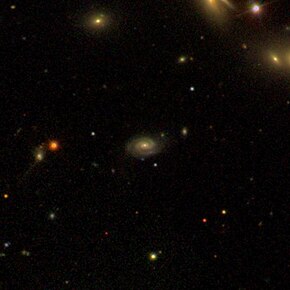
NGC 3718, also called Arp 214, is a galaxy located approximately 52 million light years from Earth in the constellation Ursa Major. It is either a lenticular or spiral galaxy.
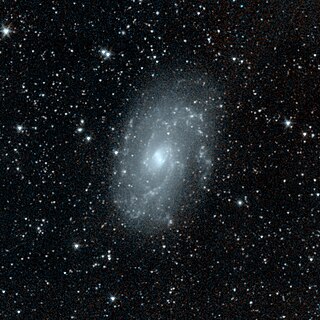
NGC 4145 is a barred spiral galaxy located in the Ursa Major galaxy cluster, 68 million light years from the Earth. The galaxy has little star formation, except on its outer edges. Due to the loss of energy that occurs without star formation, some astronomers predict that the galaxy will degenerate into a lenticular galaxy in the near future. However, the galaxy's interaction with NGC 4151 may "maintain [its] star formation".
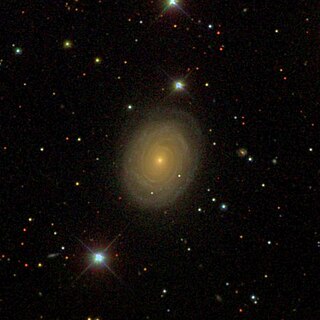
NGC 7001 is an intermediate spiral galaxy located about 300 million light-years away in the constellation Aquarius. NGC 7001 has an estimated diameter of 106,000 light-years. It was discovered by English astronomer John Herschel on July 21, 1827, and was also observed by Austrian astronomer Rudolf Spitaler on September 26, 1891.
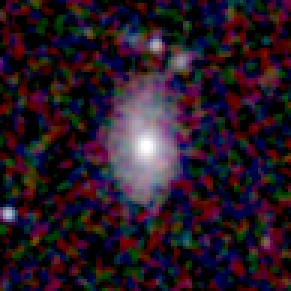
NGC 7301 is a barred spiral galaxy located around 308,000,000 light-years (94,000,000 pc) away from Earth in the constellation Aquarius. It was discovered by American astronomer Francis Preserved Leavenworth In 1886.

NGC 491 is a barred spiral galaxy located about 161 million light-years away from Earth, in the constellation Sculptor. NGC 491 was discovered by astronomer John Herschel on September 25, 1834.
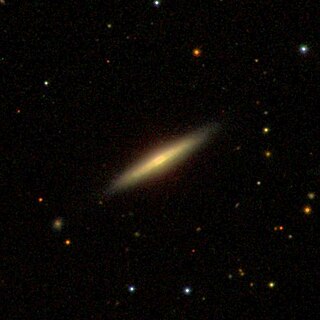
NGC 489 is probably an edge-on spiral galaxy located about 97 million Light-years away from Earth in the constellation Pisces. NGC 489's calculated velocity is 2507 km/s. NGC 489 was discovered by German astronomer Heinrich Louis d'Arrest on December 22, 1862.

NGC 487 is a barred spiral galaxy located about 250 million light-years away from Earth in the constellation Cetus. NGC 487's calculated velocity is 5949 km/s. NGC 487 was discovered by American astronomer Francis Leavenworth on November 28, 1885.

NGC 480 is a spiral galaxy located about 546 million light-years away from Earth in the constellation Cetus. NGC 480 was discovered by American astronomer Francis Leavenworth In 1886.

NGC 4907 is a barred spiral galaxy located about 270 million light-years away in the constellation of Coma Berenices. It is also classified as a LINER galaxy. NGC 4907 was discovered by astronomer Heinrich d'Arrest on May 5, 1864. The galaxy is a member of the Coma Cluster, located equidistant between NGC 4928 and NGC 4829.
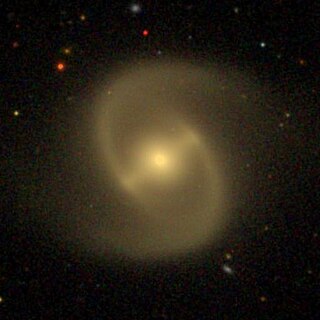
NGC 4440 is a barred spiral galaxy located about 55 million light-years away in the constellation of Virgo. NGC 4440 was discovered by astronomer William Herschel on April 17, 1784. It is a member of the Virgo Cluster.

NGC 4498 is a barred spiral galaxy located about 50 million light-years away in the constellation Coma Berenices. NGC 4498 was discovered by astronomer William Herschel on March 21, 1784. NGC 4498 is a member of the Virgo Cluster.

NGC 4607 is an edge-on spiral galaxy located about 56 million light-years away in the constellation Virgo. NGC 4607 was discovered by astronomer R. J. Mitchell on April 24, 1854. The galaxy is a member of the Virgo Cluster.

NGC 3285 is a barred spiral galaxy located about 200 million light-years away in the constellation Hydra. The galaxy was discovered by astronomer John Herschel on March 24, 1835. NGC 3285 is a member of the Hydra Cluster.

NGC 3558 is an elliptical or a lenticular galaxy located 440 million light-years away in the constellation Ursa Major. It was discovered by the astronomer Heinrich d'Arrest on April 15, 1866. It is a member of the galaxy cluster Abell 1185 and is classified as a LINER galaxy.

NGC 2603 is a small compact spiral galaxy located 787 million light-years away in the constellation of Ursa Major from the solar system. It was discovered by George Johnstone Stoney, an Irish astronomer, on February 9th, 1850. NGC 2603 has an estimated diameter of 81,000 thousand light-years. It contains a narrow-line active galactic nucleus. The Hyperleda database associates NGC 2603 and NGC 2606 as one single galaxy. NASA/IPAC database on the other hand, classifies NGC 2603 as galaxy PGC 3133653.

NGC 2606 is a spiral galaxy in the Ursa Major constellation. It lies 648 million light-years away from our home galaxy, the Milky Way. The galaxy was first discovered by John Herschel, a British astronomer on 16th February 1831. According to SIMBAD database, it is classified as a LINER galaxy and a Seyfert type 2 galaxy by Hyperleda.
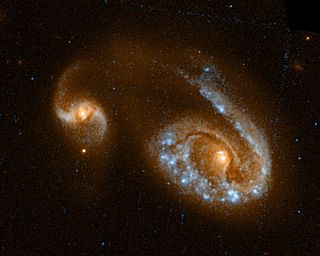
NGC 5278 is a spiral galaxy in the constellation Ursa Major. It was discovered by German-British astronomer William Herschel in 1789. NGC 5278 is in gravitational interaction with the galaxy NGC 5279. This pair of galaxies appears in the Halton Arp's Atlas of Peculiar Galaxies under the symbol Arp 239. The luminosity class of NGC 5278 is II. The nucleus of this galaxy presents a burst of star formation and it is an active Seyfert 2 type galaxy. In addition, NGC 5278 is possibly a LINER galaxy, a galaxy whose nucleus presents an emission spectrum characterized by broad lines of weakly ionized atoms. NGC 5278 is also a galaxy whose core shines in the ultraviolet spectrum. It is listed in the Markarian catalog under the reference Mrk 271.
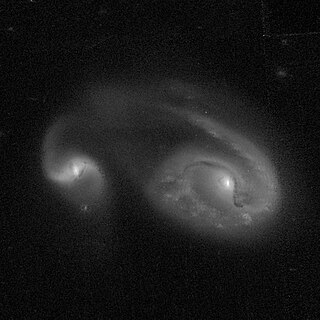
NGC 5279 is a spiral galaxy in the constellation Ursa Major. It was discovered by German-British astronomer William Herschel in 1789. NGC 5279 is in gravitational interaction with the galaxy NGC 5278. This pair of galaxies appears in Halton Arp's Atlas of Peculiar Galaxies under the designation Arp 239. The luminosity class of NGC 5279 is I1. NGC 5279 is a galaxy whose core shines in the ultraviolet region. It is listed in the Markarian catalog under the designation Mrk 271.
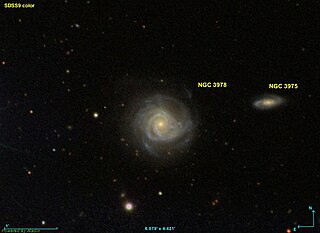
NGC 3978 is a large intermediate spiral galaxy with a bar located in the constellation of Ursa Major. It is located 460 million light-years away from the Solar System and was discovered by William Herschel on March 19, 1790, but also observed by John Herschel on April 14, 1831.
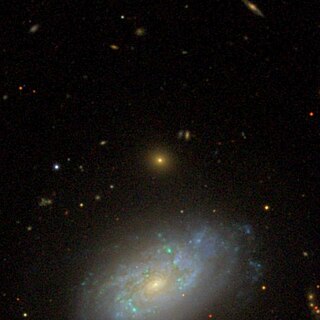
NGC 3950 is an elliptical galaxy of type E, in Ursa Major. Its redshift is 0.074602, meaning NGC 3950 is 1.03 billion light-years or 316 Mpc from Earth, which is within the Hubble distance values. This high redshift makes NGC 3950 one of the furthest New General Catalogue objects.
